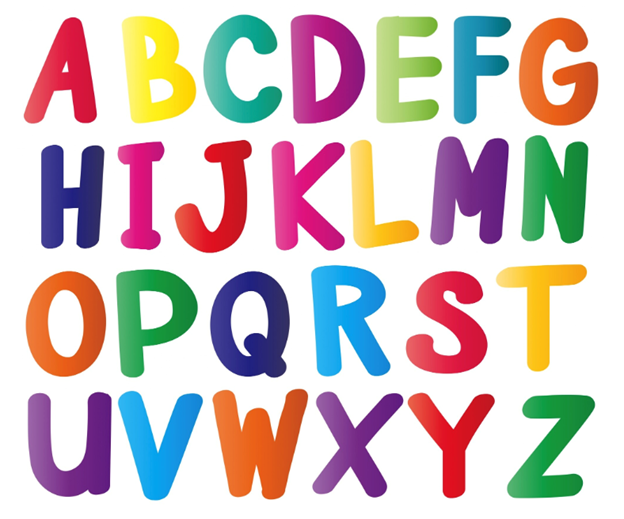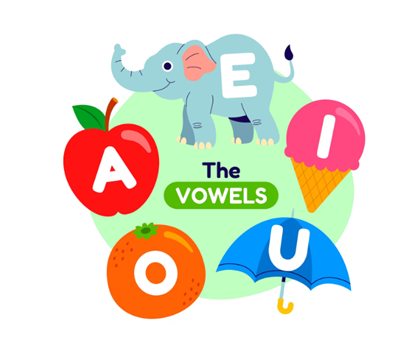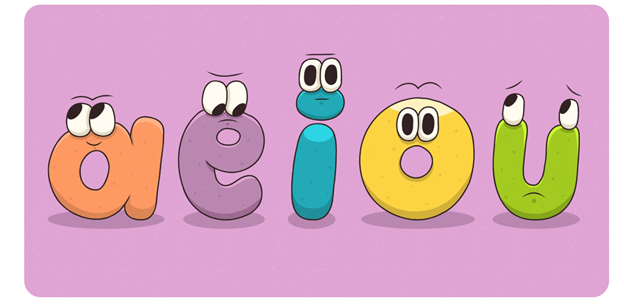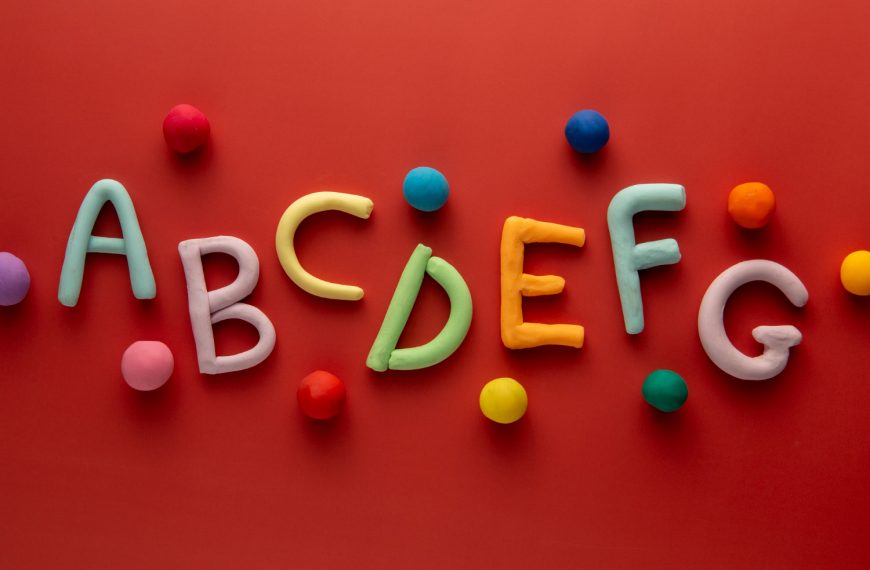The English alphabet has 26 letters: A, B, C, D, E, F, G, H, I, J, K, L, M, N, O, P, Q, R, S, T, U, V, W, X, Y, Z. Different languages have different numbers of letters. For example, German has 30 letters while French has 26 letters, just like English. In this blog, we will closely examine the number of letters in the English alphabet. We will also look at letters in the German, French, Arabic, and Spanish alphabets, among others.
What is an alphabet?
An alphabet is a collection of letters used to represent a consonant and a vowel in a language. The English alphabet, one of the most widely known, contains 26 letters.
We all remember singing our ABCD song at nursery school. It was the beginning of our educational journey. But did you know that the ABCD song is different when it is sung in different languages? Most written languages have an alphabet, but they all have different numbers of letters. This means that some languages have a 27th letter in their alphabet, such as German, while others have fewer or at least 26 letters, like Italian. In the next section of the blog, we will look at how many letters are in the English alphabet and other languages.
Also Read: Fun Ways to Teach the Alphabet to Kids
How Many Letters are There in the English Alphabet?

As mentioned earlier, the English alphabet consists of 26 letters. Here, we will look at these letters, learn about their history, and fun facts related to the total alphabet of English.
Letters of the English Alphabet
English has 26 letters that range from A to Z: A, B, C, D, E, F, G, H, I, J, K, L, M, N, O, P, Q, R, S, T, U, V, W, X, Y, Z.
History of the English Alphabet
The English alphabet originated from the Phoenician alphabet, which is the ancestor of many modern alphabets, including the Greek and Latin alphabets. The Phoenician alphabet only had 22 letters, all of which were consonants. Later, the Greeks modified this alphabet by adding letters to represent vowel sounds. After that, the Romans created their own version of the Greek alphabet. Over time, this Roman alphabet made its way to England, likely through Ireland, and became part of Old English, which evolved to modern-day English.
Also Read: What are Double Consonants? How to Master Them?
Vowels and Consonants in the English Alphabet

The modern English alphabet has both vowels and consonants. Consonants are letters that stand for sounds made when your mouth blocks or changes the airflow in some way. These sounds need your lips, tongue, or cheeks to be in certain positions. There are 21 consonants in English: B, C, D, F, G, H, J, K, L, M, N, P, Q, R, S, T, V, W, X, Y, Z
Vowels are letters that represent sounds made with an open mouth and throat. Air flows freely when you say them. The five main vowels in English are: A, E, I, O, U.
Sometimes, “W” and “Y” act like vowels (like in wore or myth), and sometimes they act like consonants (like in water or yellow). These letters are called semivowels because they can function as both vowels and consonants. By combining vowels and consonants, we create the words we use to speak and write in English.
Also Read: Learn How to Pronounce Vowels
Silent Letters in English

Some letters in English words are silent—they are spelt but not pronounced. For example, the “B” in subtle or the “P” in raspberry is silent. Silent letters can show up:
- At the start (gnome)
- In the middle (school)
- At the end (column)
For more information on silent letters in English, read our blog,
Silent Letters in English : A Comprehensive Guide with Examples
How Many Letters are There in Other Languages?
Now that you know how many letters are in the English language, let’s look at the total number of letters in other languages.
Arabic Alphabet
There’s a sublime beauty in the Arabic written word that lies in the uniqueness in which it is written and read: right to left, that is, instead of left to right. Its alphabet has 28 letters that form a language traced back to the sixth century!
Did you know? When travelling to an Arab country, you will find street signs without transliterations. Another reason to take a crash course in Arabic before you go!
Spanish Alphabet
Hola! The Spanish alphabet, like the English alphabet, is a variation of the Latin alphabet. So, it has the same 26 letters as the English alphabet (a to z).
Did you know?
The 27th letter of the Spanish alphabet combines to create about 30 different phonemes. Mind you, this number isn’t fixed on account of the ‘dialectical variation’, or in layman’s terms, ‘fluidity’, of the Spanish language. Trickier than it seems, this alphabet!
Also Read: Alphabet Worksheets for Kids
Swedish Alphabet
If you don’t quite agree with the popular adage ‘less is more’, the Swedish language, with a whopping 29 letters, might catch your fancy! Besides the extra vowels, the first 26 letters of the Swedish language match the English a-z alphabet.
Did you know? Some alphabets feature ‘umlauts’ that resemble double dots (Å,å, Ů,ů). Now you know where you’ve seen that character!
French Alphabet
If Paris is the most romantic city in the world, French is the most romantic language. Just like English, it has 26 letters, but their pronunciation can be quite confusing.
Note: The ‘accent marks’ that lend the difference between the French and English written words are mere ‘modifiers’ and not additional letters.
Did you know? The ‘cedilla’ that appears under the letter c (ç) when preceding a, o, or you indicate an ‘s’ sound.
German Alphabet
Even though the German alphabet is similar to its English counterpart in having the same number of letters, 26, it also contains 3 umlauts: ä, ö and ü.
Did you know? The German language has an additional consonant: ß, called ‘Eszett’. Called a ‘ligature’, it is pronounced like the ‘s’ in ‘see’ and never stands at the beginning of a word.
Also Read: Difference between Alphabet and Letter for Preschoolers
Italian Alphabet
Like the Leaning Tower of Pisa, the Italian language (Alfabeto Italiano) comes with a twist. Using a variation of Latin, it has 21 letters that are not pronounced in the same way as in English. The missing letters in the Italian alphabet are J, K, W, X, and Y.
Like its English equivalent, the Italian alphabet has 5 vowels (a,e,i,o,u). Out of these, only ‘a’ represents one good value during each of the other two.
Did you know? Even though the Italian language loves double consonants, you’ll rarely find a ‘double q’s, as in ‘squadron’, meaning ‘shambles’.
Chinese Alphabet
There’s just something about Chinese writing that is so aesthetically appealing! But would you believe it if you were told there was ‘no such thing as the Chinese alphabet’? Believe it or not, it’s true! The Chinese language is about characters that aren’t put together like letters to form a word because the characters are the words themselves!
Even though single characters’ do form words, sometimes two or three characters do the trick.
Did you know? Unlike other languages, the Chinese language is written as a series of characters with ‘meanings’ and ‘sounds’.
Japanese Alphabet
If the Chinese alphabet threw you for a loop, you wouldn’t know what hit you with the Japanese. This language is an amalgamation of 3 writing systems: Hiragana, Katakana and Kanji.
Japanese children, when starting, learn Hiragana first.
Did you know? Both Katakana and Hiragana are languages native to Japan, while Kanji was inherited from the Chinese ‘Hanzi’.
Also Read: Alphabetic Principle: Foundation of Literacy Mastery
Korean Alphabet
Unlike its Japanese and Chinese counterparts, the Korean language is far simpler. While the former has thousands of characters that each have 10, 15, or more strokes, the most complex character in the Korean alphabet can be written using only five strokes.
The Korean alphabet has 14 consonants and 10 vowels. Also known as Hangul, it is one of the best languages for beginners, even those who don’t know Korean.
Did you know? The Old Korean writing system was created using classical ‘Chinese’ characters! King Sejong, the inventor of Hangul, created it so Koreans could have a practical way of reading and writing.
Greek Alphabet
Do you ‘speak Greek’? Well, if you speak the Greek language fluently to a person who knows Greek, you do! This cool alphabet has 24 letters, but do you know what they are?
Alpha, beta, gamma, delta, epsilon, zeta, eta, theta, iopa, kappa, lambda, mu, nu, zi, omicron, pi, rho, sigma, tau, upsilon, phi, chi, psi, omega.
A no-brainer is that singing the ‘Greek song’ will be way harder than our cherished ‘ABCD’. One looks at the letters of the Greek alphabet, and a lot of them appear familiar. For instance, the letter pi (π) is the name and symbol for the popular mathematical constant.
Did you know? When referring to something primary, we refer to the Greek letter ‘alpha’ (α), like in the phrase ‘alpha dog’. Greek letters find their places as names of fraternities and sororities, houses of ‘societies’ in American universities!
FAQs About the Total Number of Alphabets
1. How many alphabets in English?
The English Alphabet has 26 letters that start with A and end with Z.
2. What is the 27th letter of the alphabet?
The ampersand (&) is believed to be the 27th letter of the alphabet. However, colloquially, there are only 26 letters in the English language. The ampersand was removed from the alphabet a long time ago.
3. What are the 29 letters of the English alphabet?
The old English alphabet had 29 letters. Besides the A to Z letters (excluding J, U, AND W), there were &, ⁊, Ƿ, Þ, Ð, and Æ that were part of the Old English alphabet. Interestingly, the letters J, U, and W were not part of the Old English Alphabet. They were added to the list in the 16th century.
Also Read: Alphabet Activities for Kids
Final Thoughts
The English alphabet has evolved over many centuries. The next time your little one is learning ABCs, you can share these fun facts about how English compares to other languages around the world. Remember, go beyond: how many letters are in the English alphabet? For more such blogs on your little one’s learning and development, visit EuroKids Blogs. Don’t forget to check out EuroKids Preschools for the first step in your child’s learning journey.
Related Blogs:
- Best Alphabet Books for Preschoolers: Looking to build your child’s letter recognition skills? This blog lists the best alphabet books, which combine colourful illustrations, rhyming stories, and interactive elements to make learning a fun experience.
- Name Spelling Activities for Preschoolers: A child’s name is often the first word they learn to spell. This blog shares creative and hands-on name spelling activities, such as using playdough, sand trays, and name puzzles that enhance letter recognition and fine motor skills.
- Fun Ways to Teach Your Child to Spell Words: Spelling doesn’t have to be boring! This blog outlines fun, simple, and effective ways to help your preschooler learn to spell.
- Engaging Bulletin Board Ideas for Preschoolers: Turn your classroom walls into interactive learning spaces! This blog features bulletin board ideas that not only decorate but also educate.















